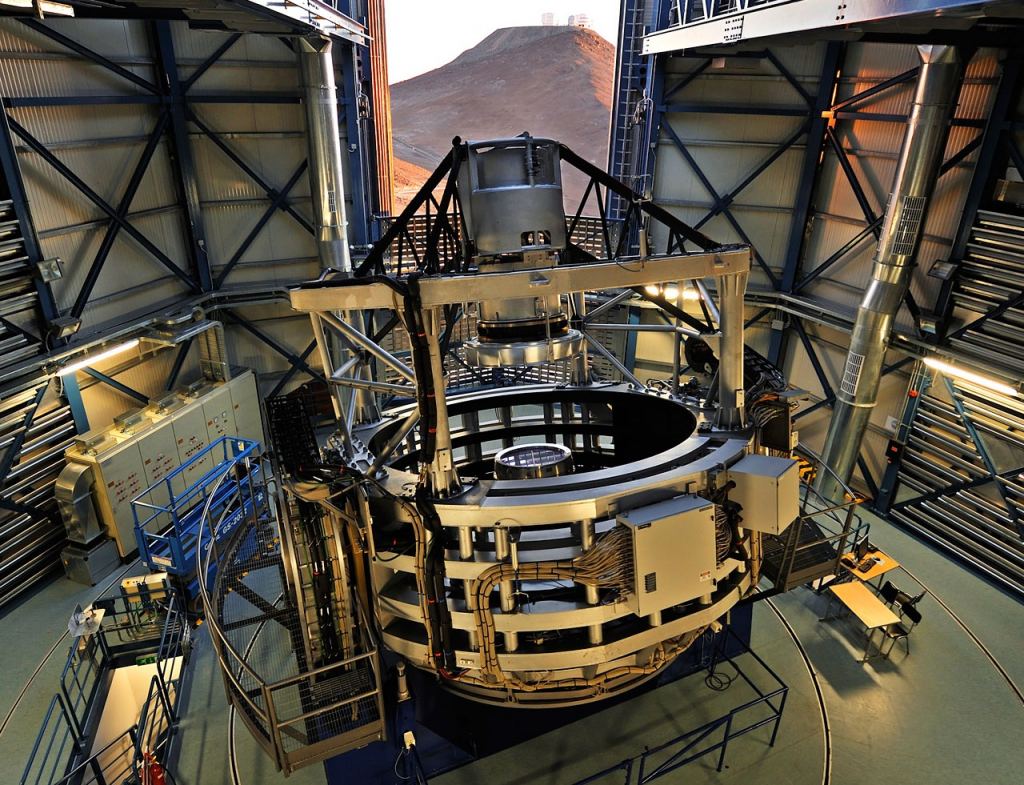Despite decades of large-scale optical surveys, there are still mysteries about the Milky Way galaxy that astronomers are eager to resolve. This is particularly true of its internal structure and the core region, which is difficult to survey due to clouds of gas and dust in the interstellar medium (ISM). This material absorbs visible light, making fainter objects difficult to see in optical wavelengths. Luckily, advances in infrared astronomy have enabled surveys of the Milky Way that have revealed things that would otherwise remain invisible to us.
For more than 13 years, an international team of astronomers has been observing the Milky Way using the ESO's 4.1-meter Visible and Infrared Survey Telescope for Astronomy (VISTA). In a recently published study, they announced the release of their final data product: a gigantic infrared map of the Milky Way containing more than 1.5 billion objects—the most detailed map our galaxy has ever created! With over 200,000 images and 500 terabytes of data, this map is also the largest observational project ever carried out with an ESO telescope.
Located at the European Southern Observatory's (ESO) Paranal Observatory in Chile, the VISTA telescope is responsible for mapping large areas of the sky. This latest map contains data gathered by the VISTA Variables in the Via Lactea (VVV) survey and its companion project, the VVV eXtended (VVVX) survey. Led by Dante Minniti, an astrophysicist at Universidad Andrés Bello in Chile, these surveys used the VISTA InfraRed CAMera (VIRCAM) to survey the Milky Way, the Small and Large Magellanic Clouds (SMC, LMC), and extragalactic space.
This latest map contains about ten times as many objects as the previous version, which the VVV Survey team released in 2012. As always, the ability to see the Universe in the infrared wavelength allows astronomers to see objects that would otherwise be obscured by clouds of gas and dust. These include newborn stars embedded in dusty globular clusters, brown dwarfs, and free-floating planets (FFP)—aka rogue planets—that do not orbit stars. " We made so many discoveries, we have changed the view of our Galaxy forever, " said Minniti in a recent ESO press release.
The observations began in 2010, using the camera's 16 special detectors with a combined resolution of 67 million pixels to survey billions of point sources of light in an area measuring 520 deg2. By observing each patch of sky many times, the team could determine the locations and proper motions of the 1.5 billion objects and monitor them for changes in brightness. The team also tracked hypervelocity stars kicked out of our galaxy's central region due to gravitational interaction with the supermassive black hole (SMBH) there - Sagittarius A*.
The observations lasted for 420 nights, ending in the first half of 2023. The resulting map provides an accurate 3D view of the Milky Way's inner regions that were previously obscured by dust. With the surveys now complete, the ESO's Paranal Observatory is preparing for future surveys by upgrading the VISTA with the 4-meter Multi-Object Spectrograph Telescope (4MOST) instrument. This new instrument will allow VISTA to perform large spectroscopic surveys, capturing the spectra of 2400 objects simultaneously over an area of the sky equivalent to 20 full Moons.
Meanwhile, the Very Large Telescope (VLT) will receive the new Multi-Object Optical and Near-infrared Spectrograph (MOONS) instrument. MOONS consists of two identical cryogenic spectrographs (with 500 fibers each), allowing astronomers to obtain optical and near-infrared spectra for about 1000 objects simultaneously. The combined power of these instruments will provide spectra for millions of the objects surveyed by VVV and VVX, and many more discoveries are anticipated!
Further Reading: ESO*, Astronomy & Astrophysics*
 Universe Today
Universe Today

